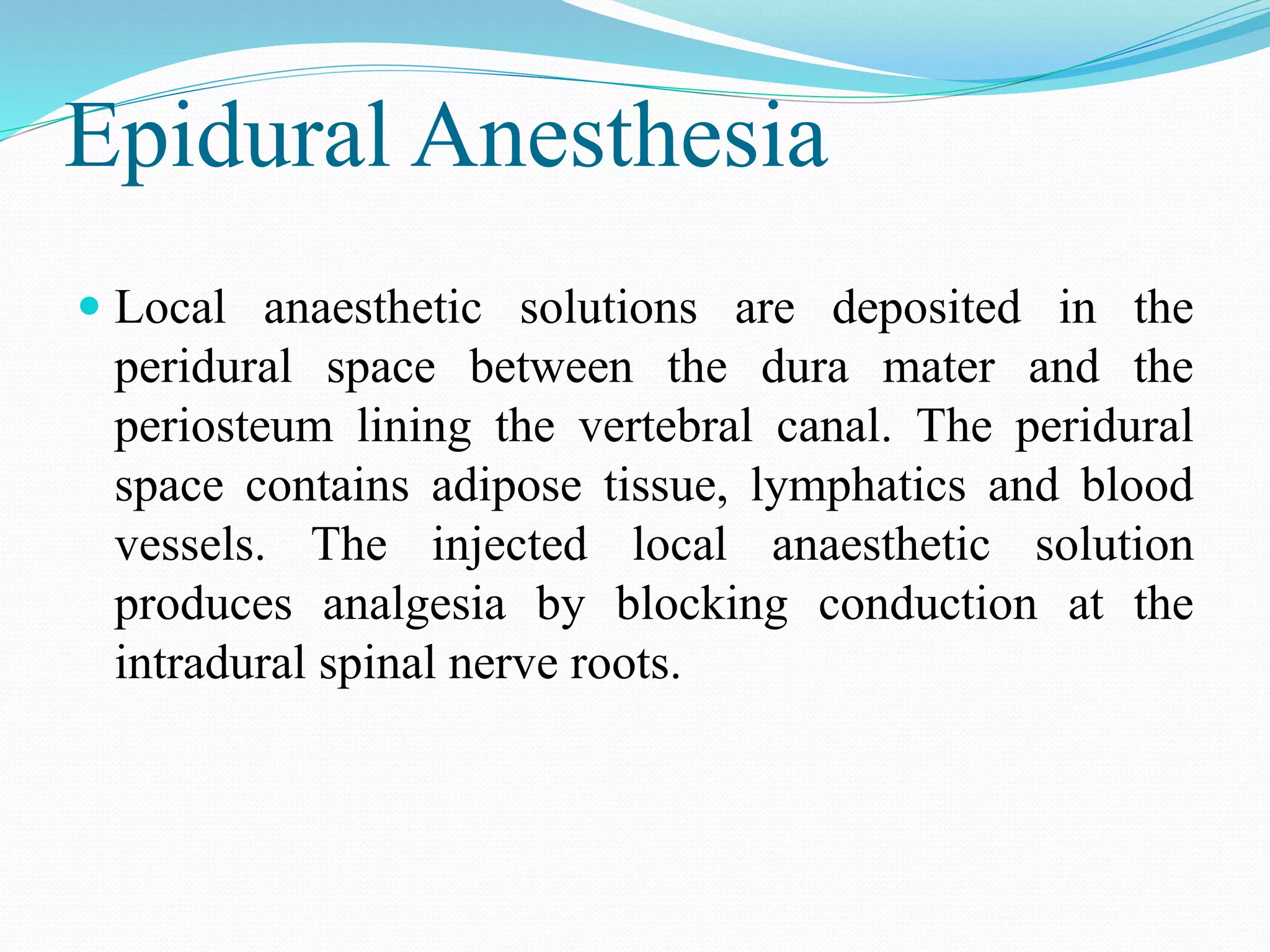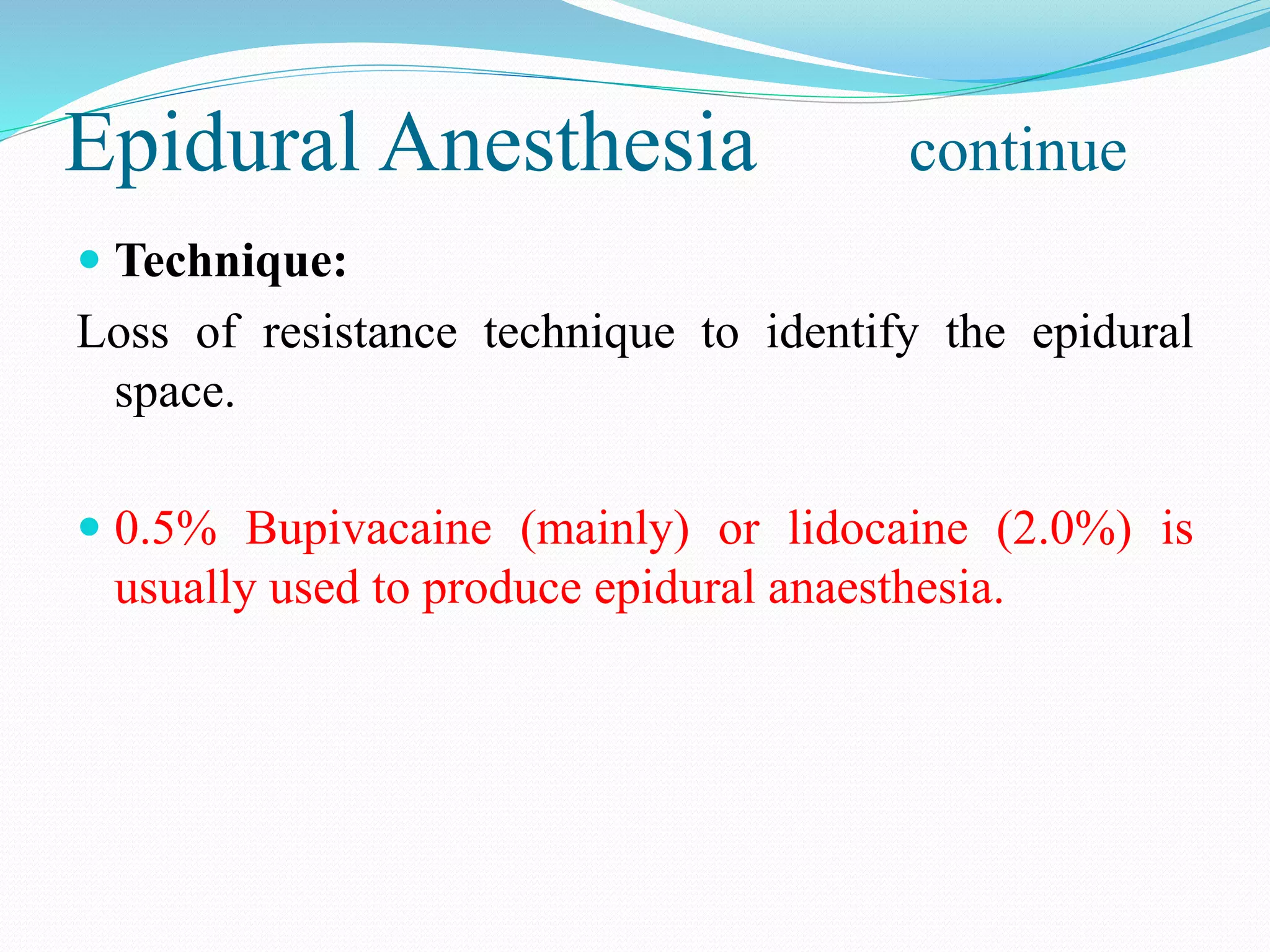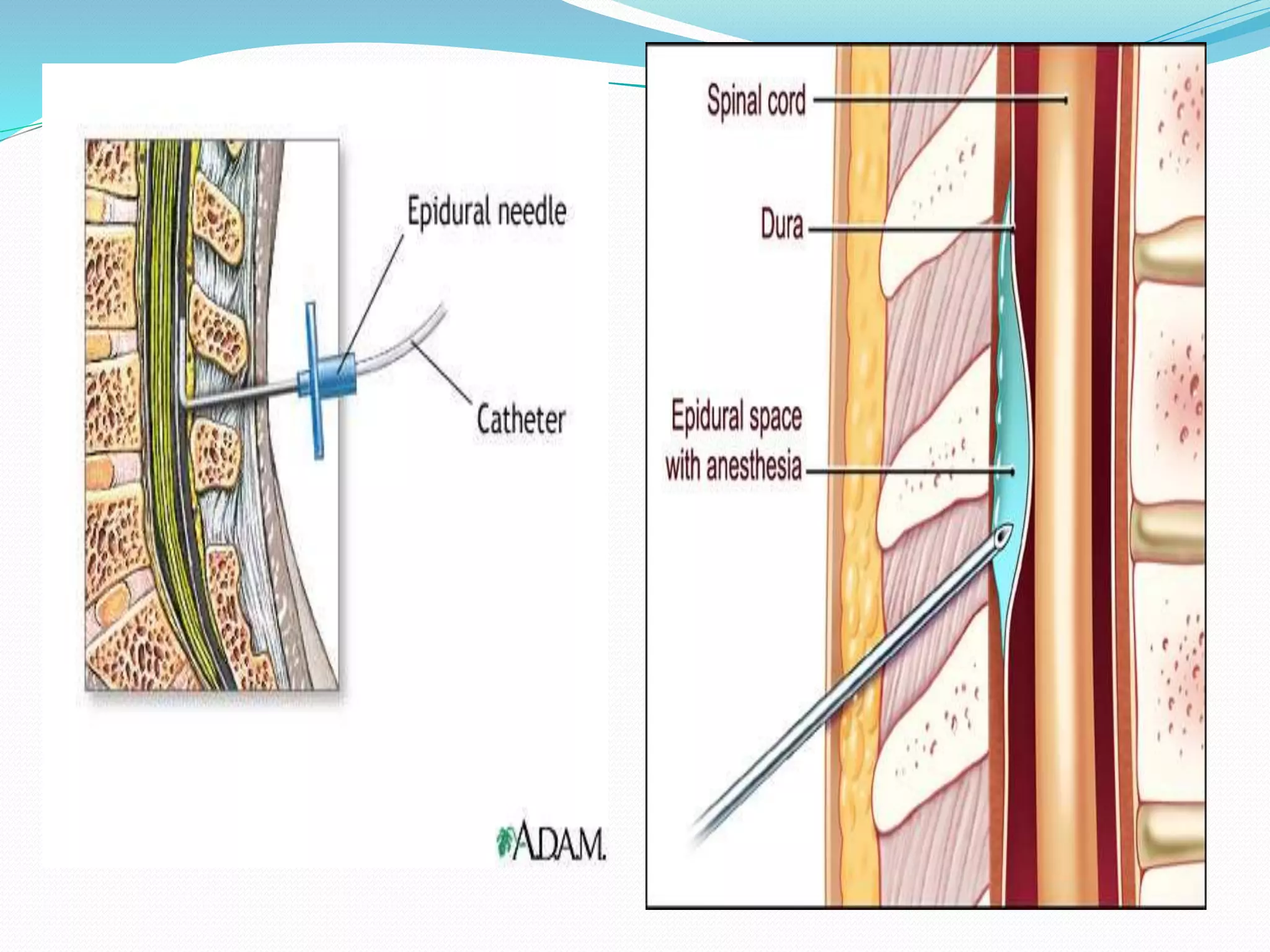This document provides information about spinal anesthesia including:
- Definitions and the advantages of spinal anesthesia such as reduced risk of respiratory complications.
- Indications for spinal anesthesia including lower body and pelvic surgeries.
- Relevant anatomy including dermatomes, vertebrae, and spinal cord landmarks.
- How to perform a spinal anesthetic including patient positioning, identifying the injection site, and inserting the spinal needle.
- Factors that influence the level and duration of the spinal block such as drug choice, dosage, and patient characteristics.
- Potential complications of spinal anesthesia.
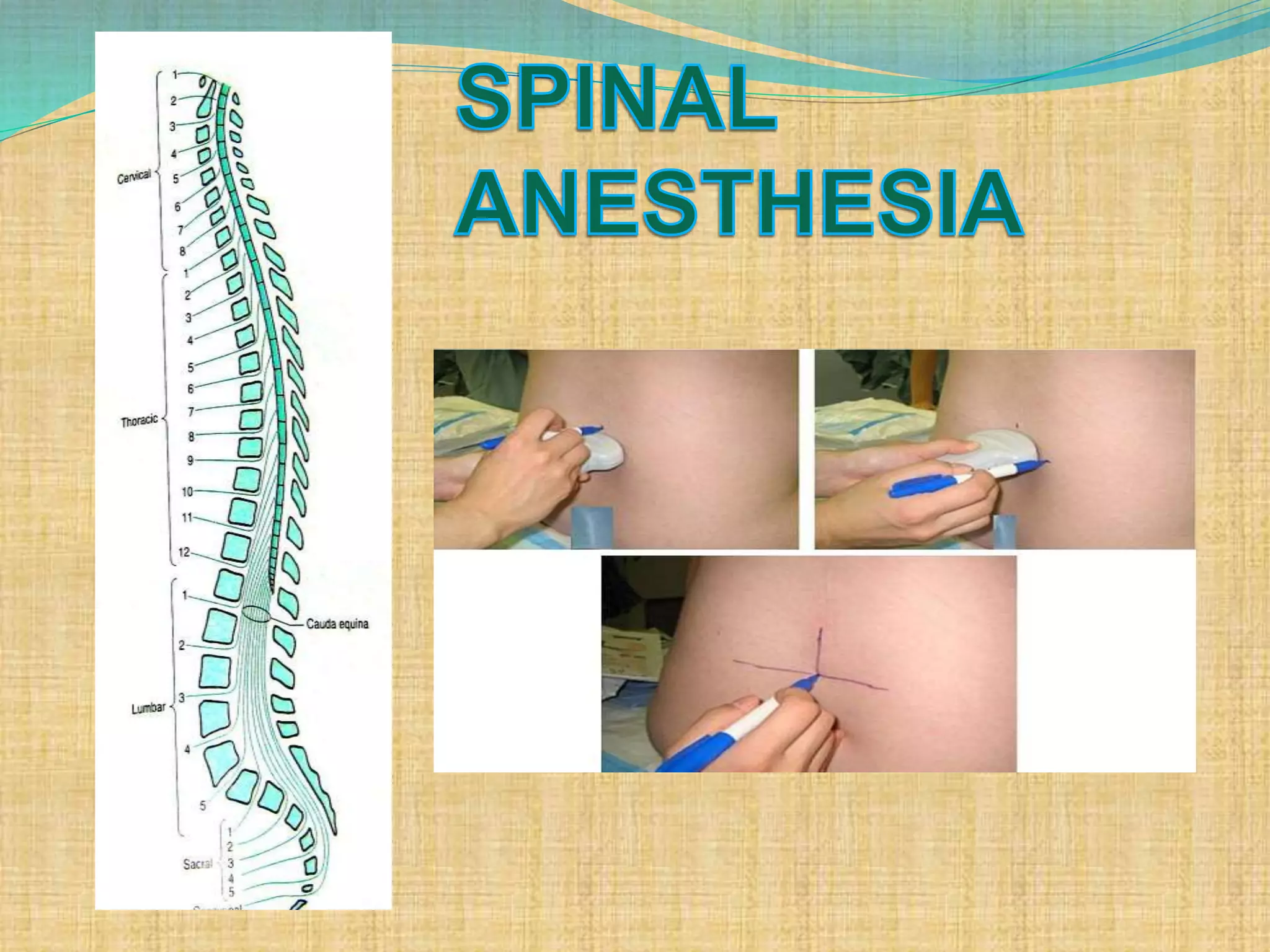
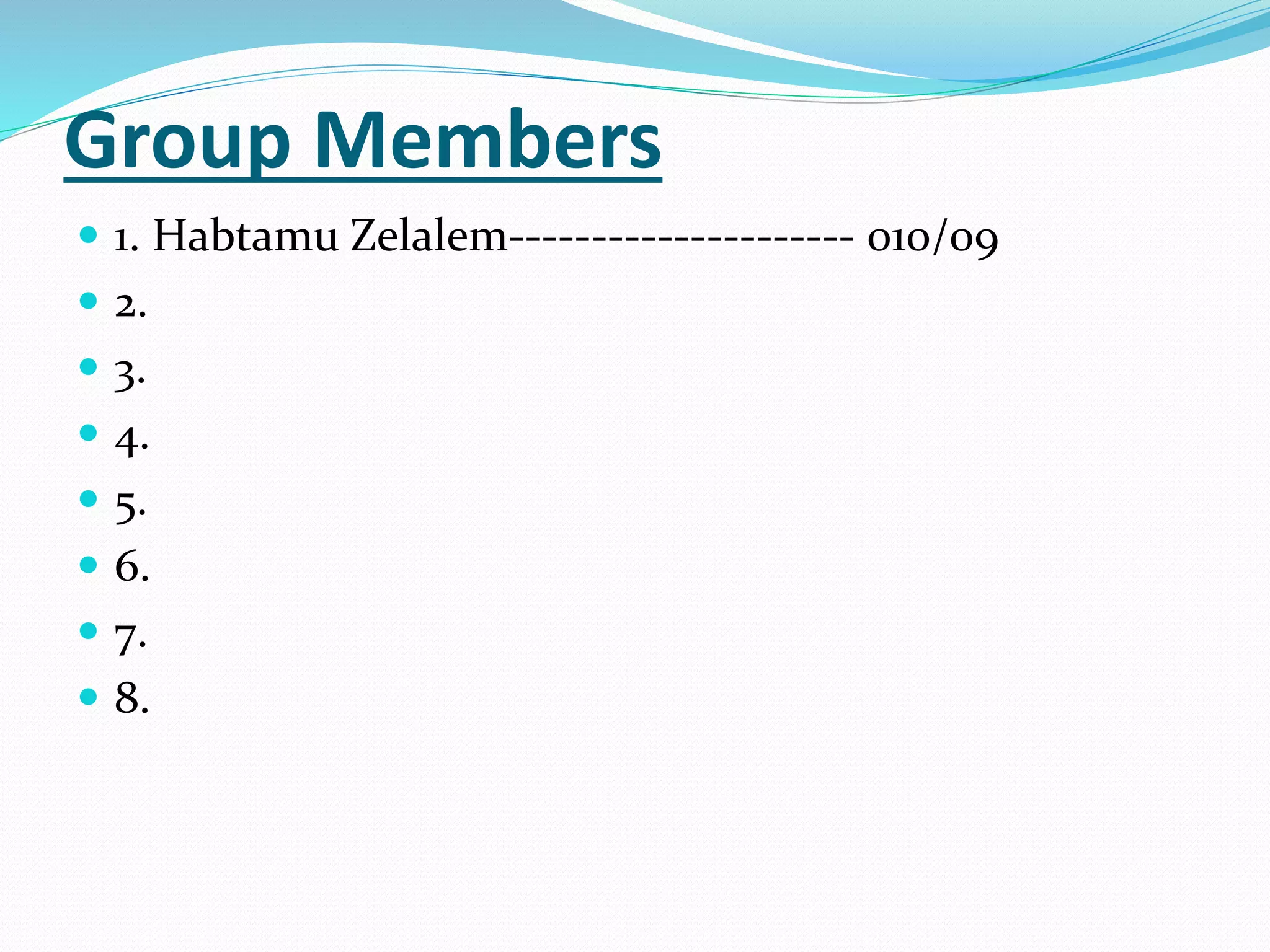
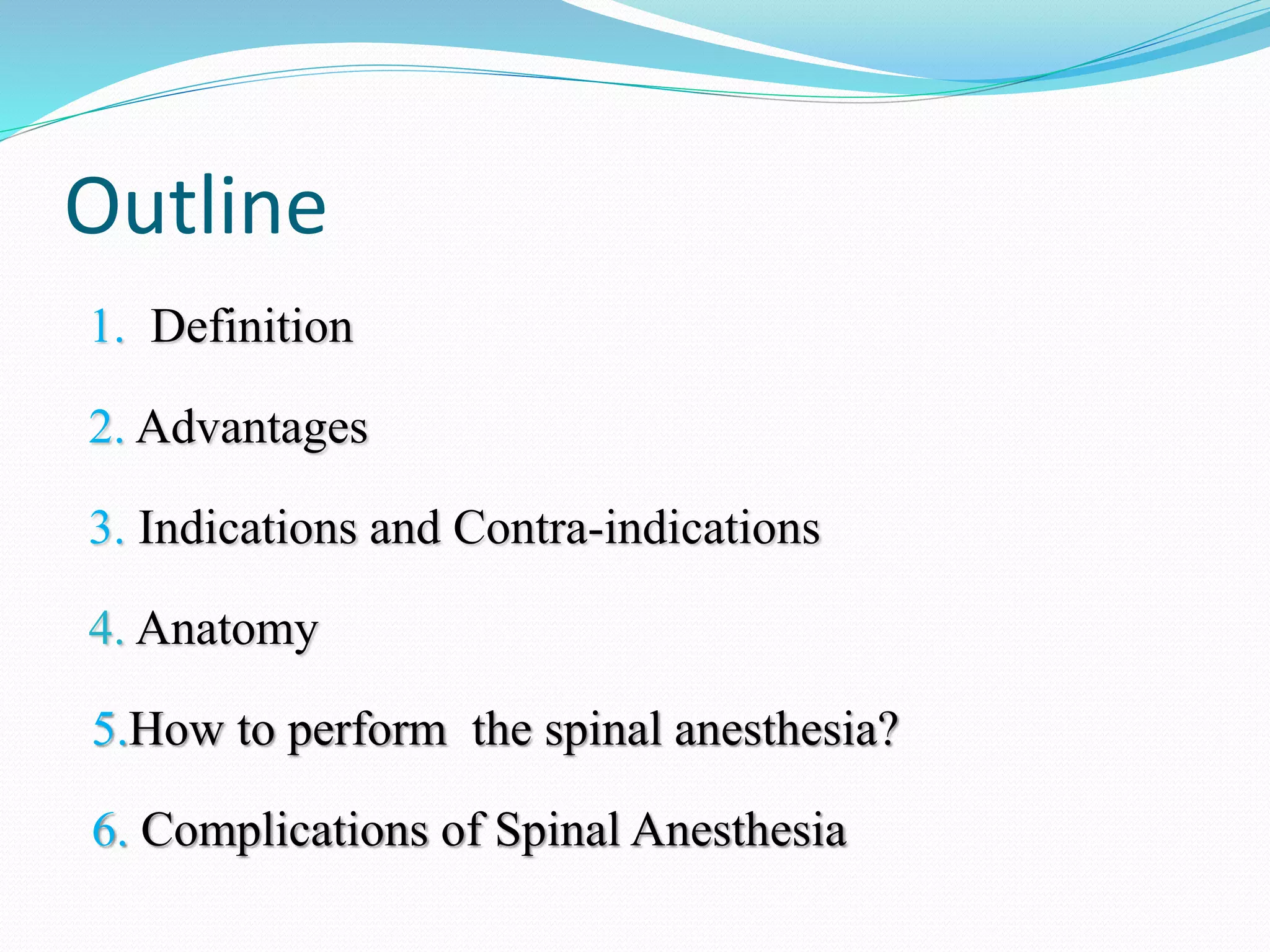
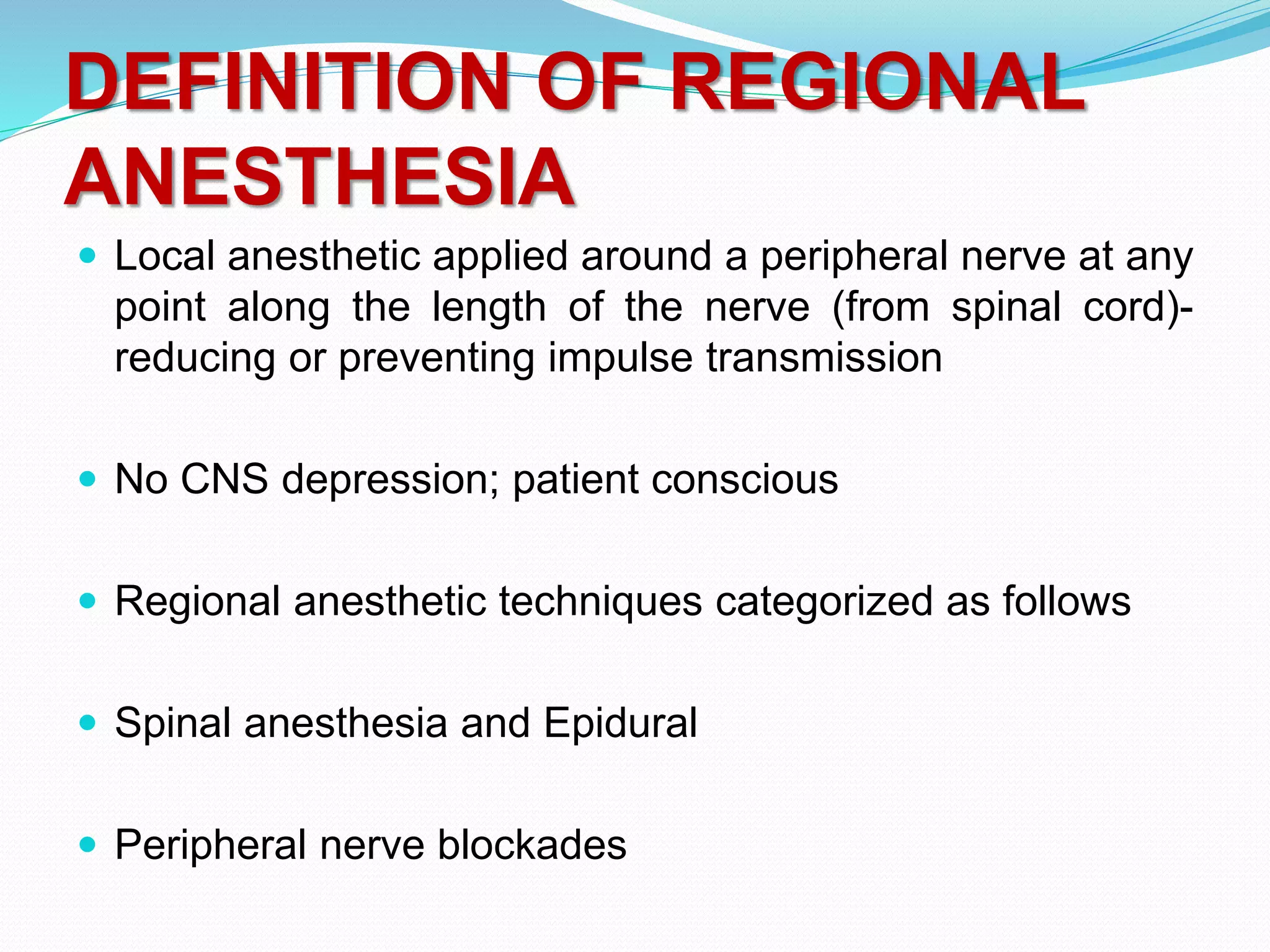
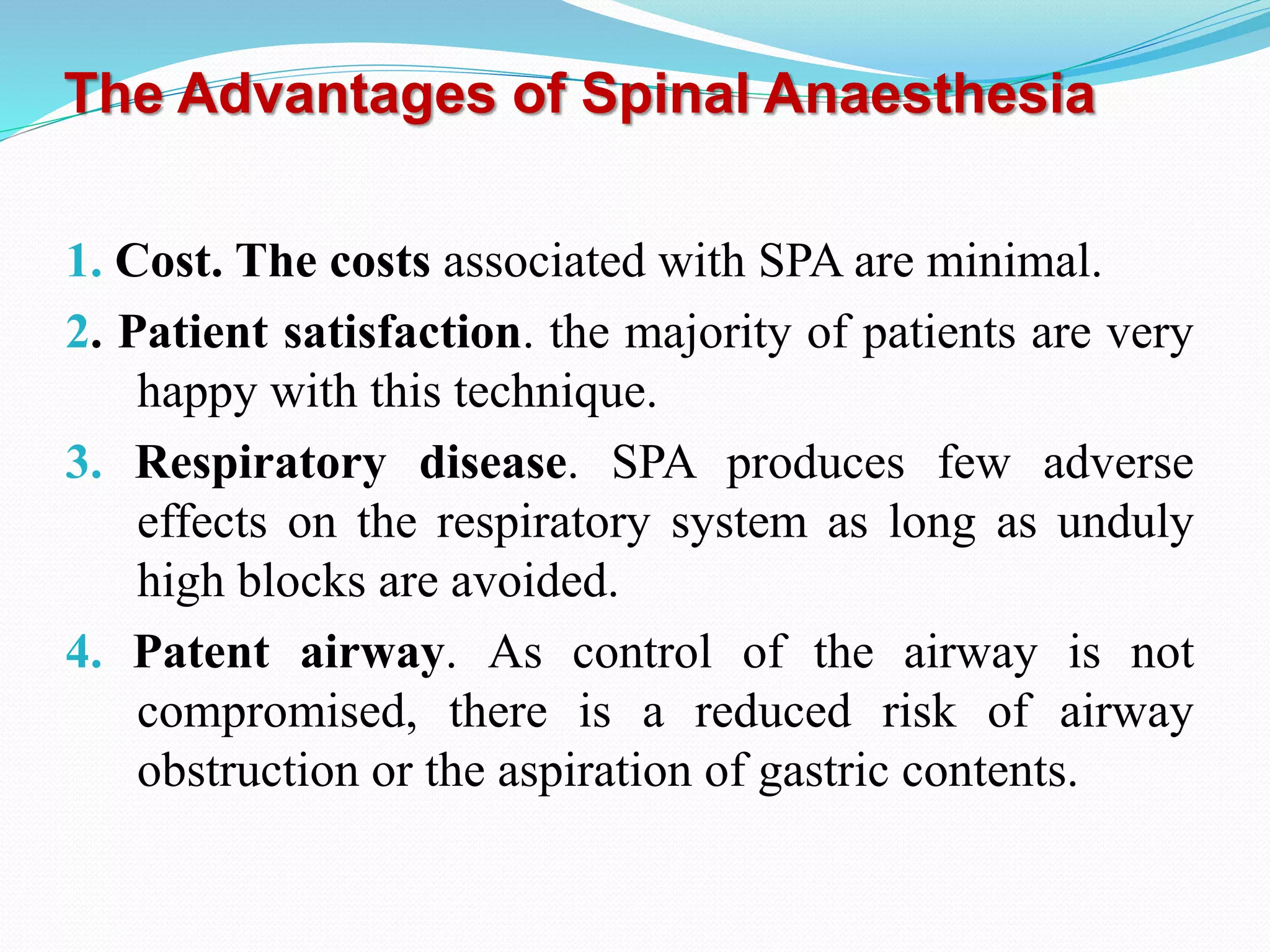

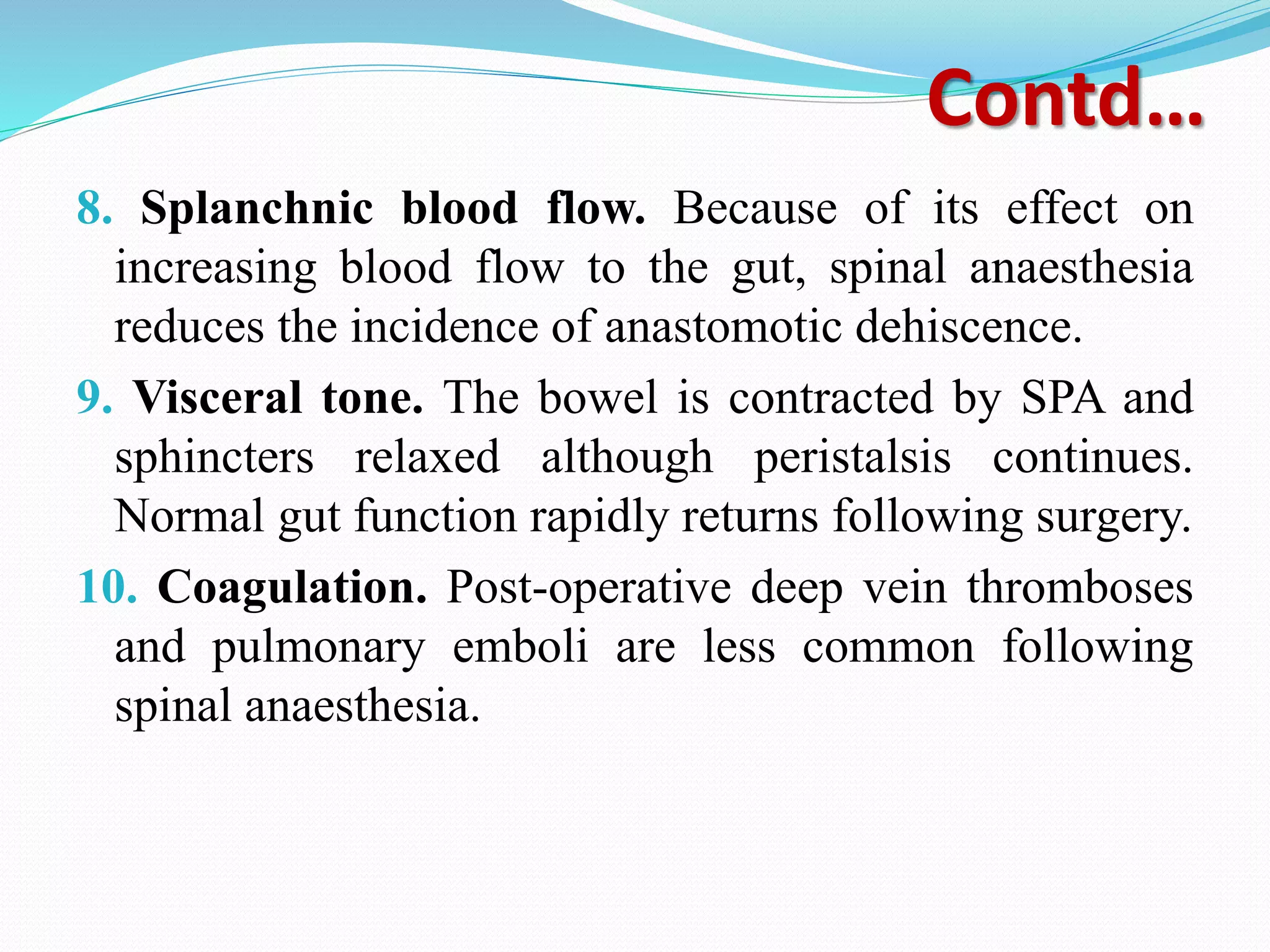
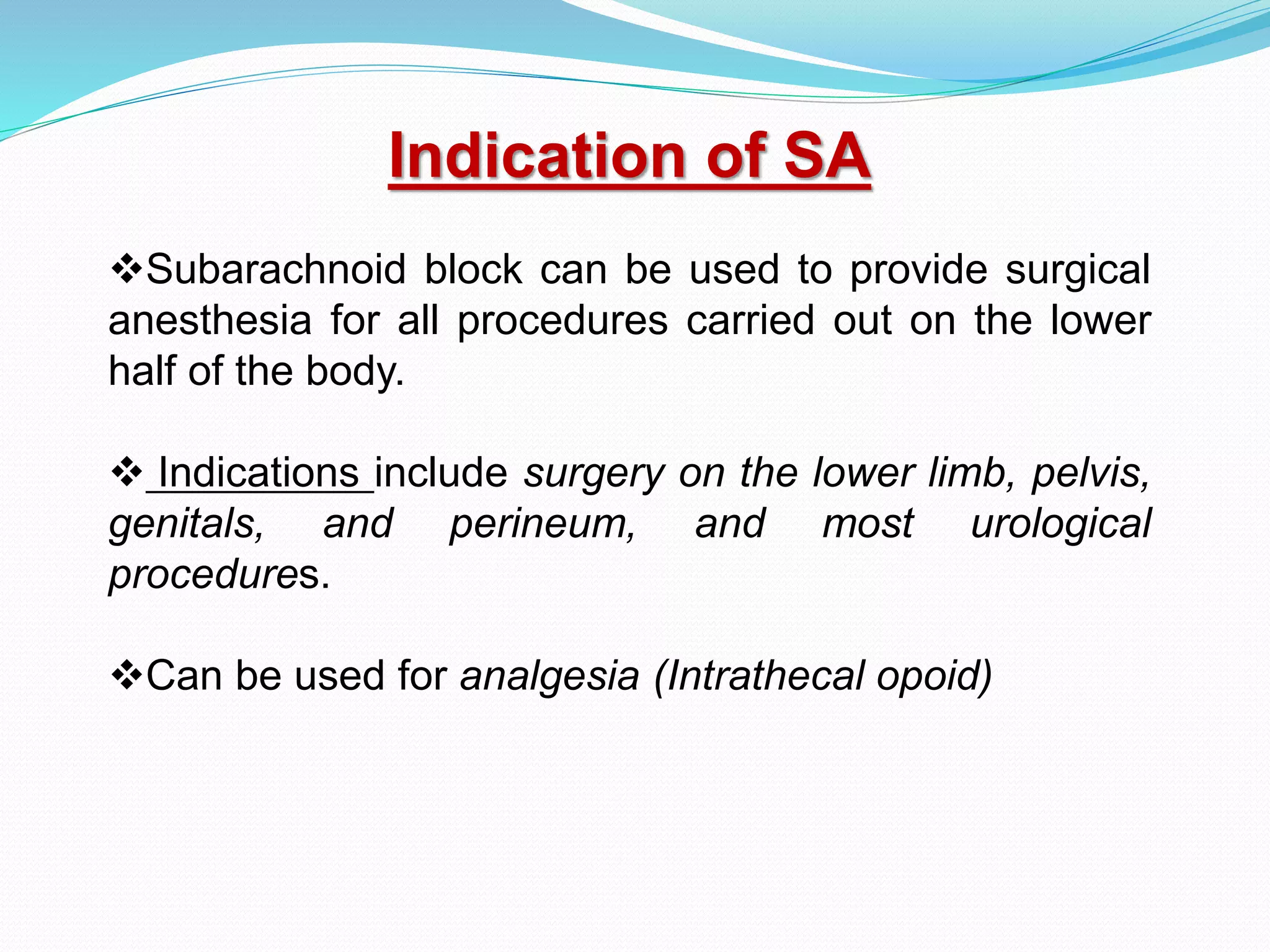


![Spinal Cord
Extends from foramen magnum to
Adult : lower border of L1 in /upper
border of L2
Infants/children : L3
It is about 45 cm long
Duramater, Subarachnoid space &
subdural space: S2 in adults( S3 in
children)
S. C gives 31 pairs of spinal nerve
An extension of piamater , the FILUM
TERMINALE penetrate the dura and attach
the terminal end of spinal cord [conus
medullaris]to the periosteum of the coccyx](https://image.slidesharecdn.com/chapter-8-spinalanaesthesia-210725104417/75/Chapter-8-spinal-anaesthesia-11-2048.jpg)




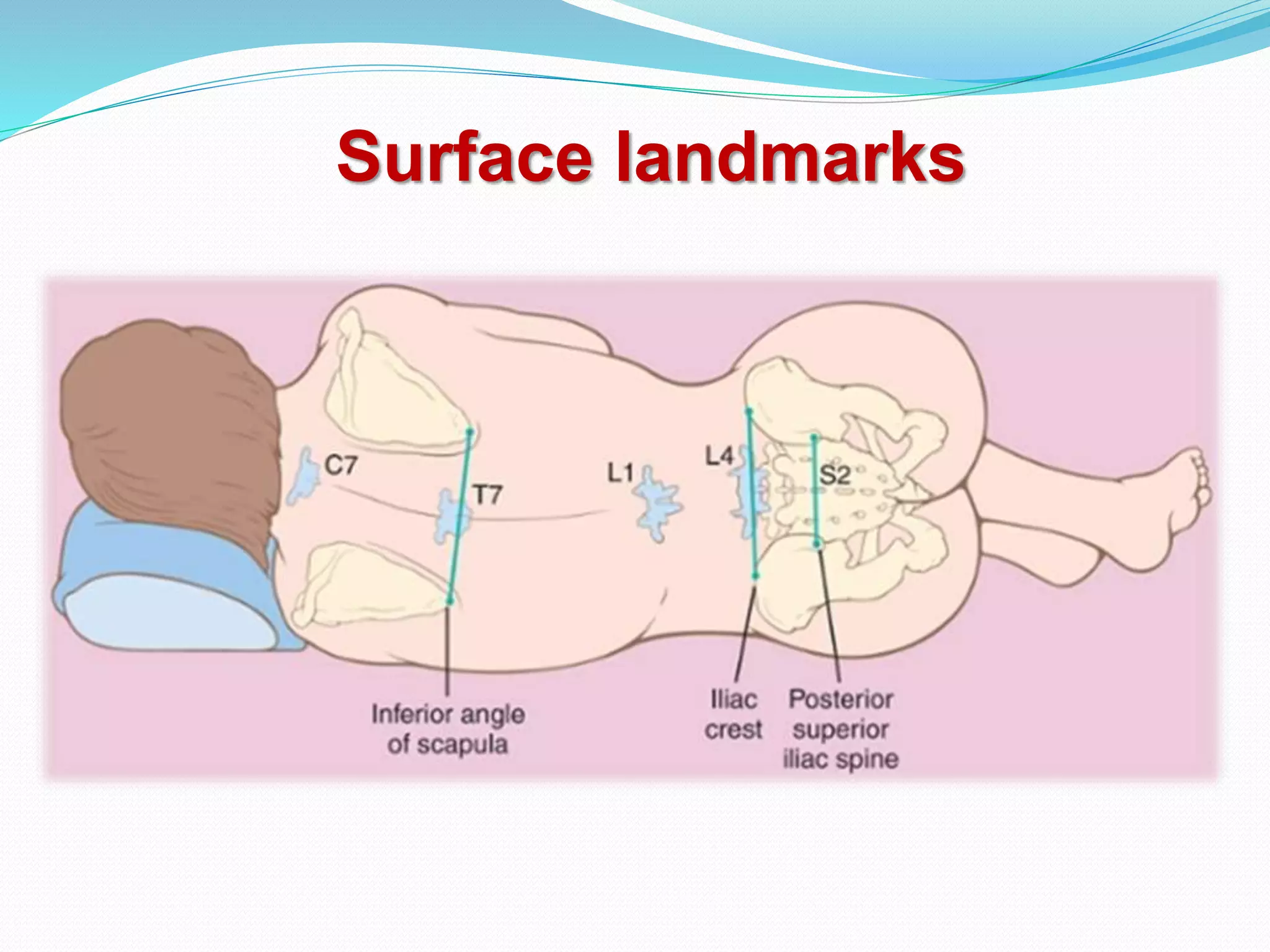





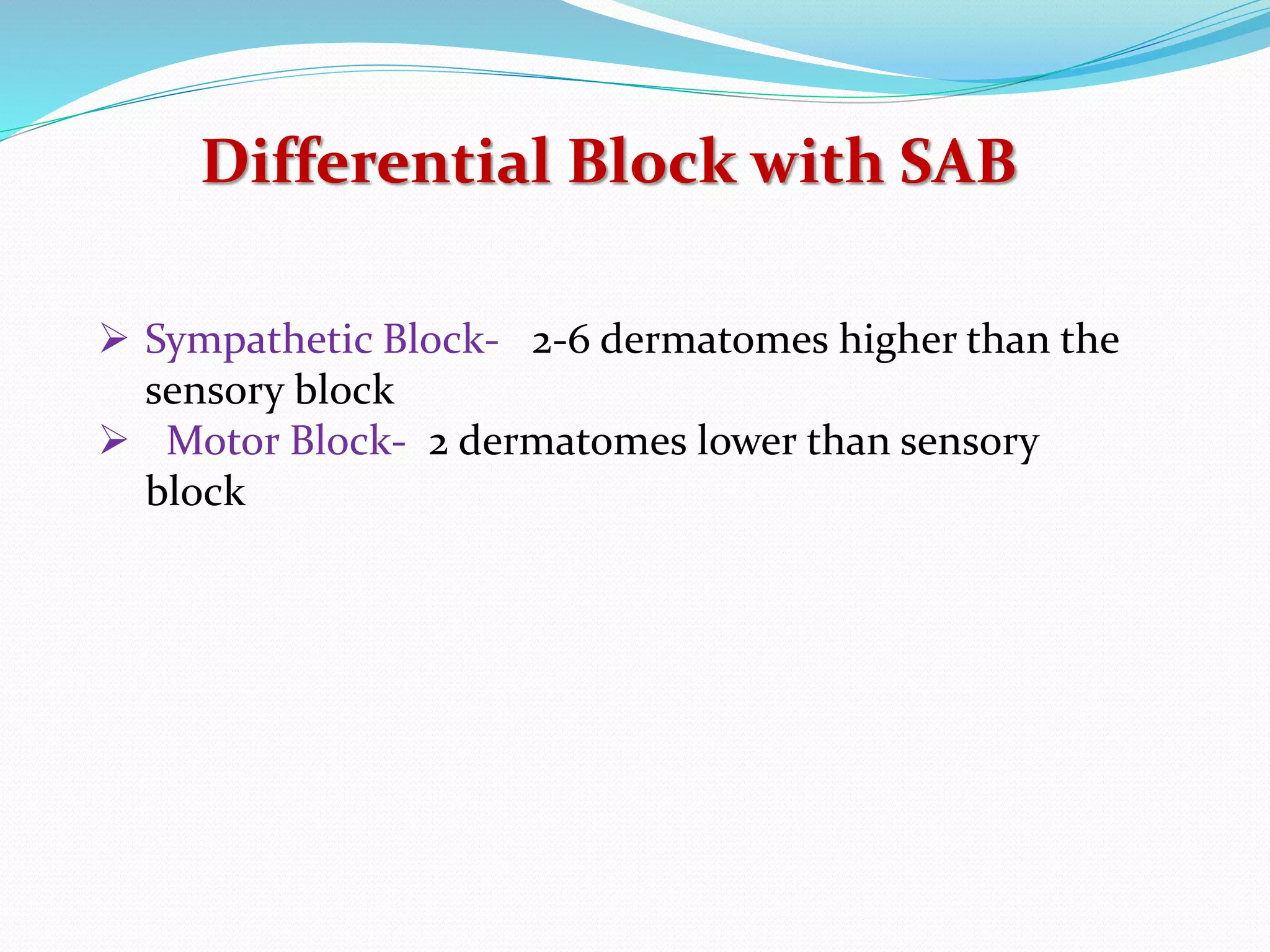

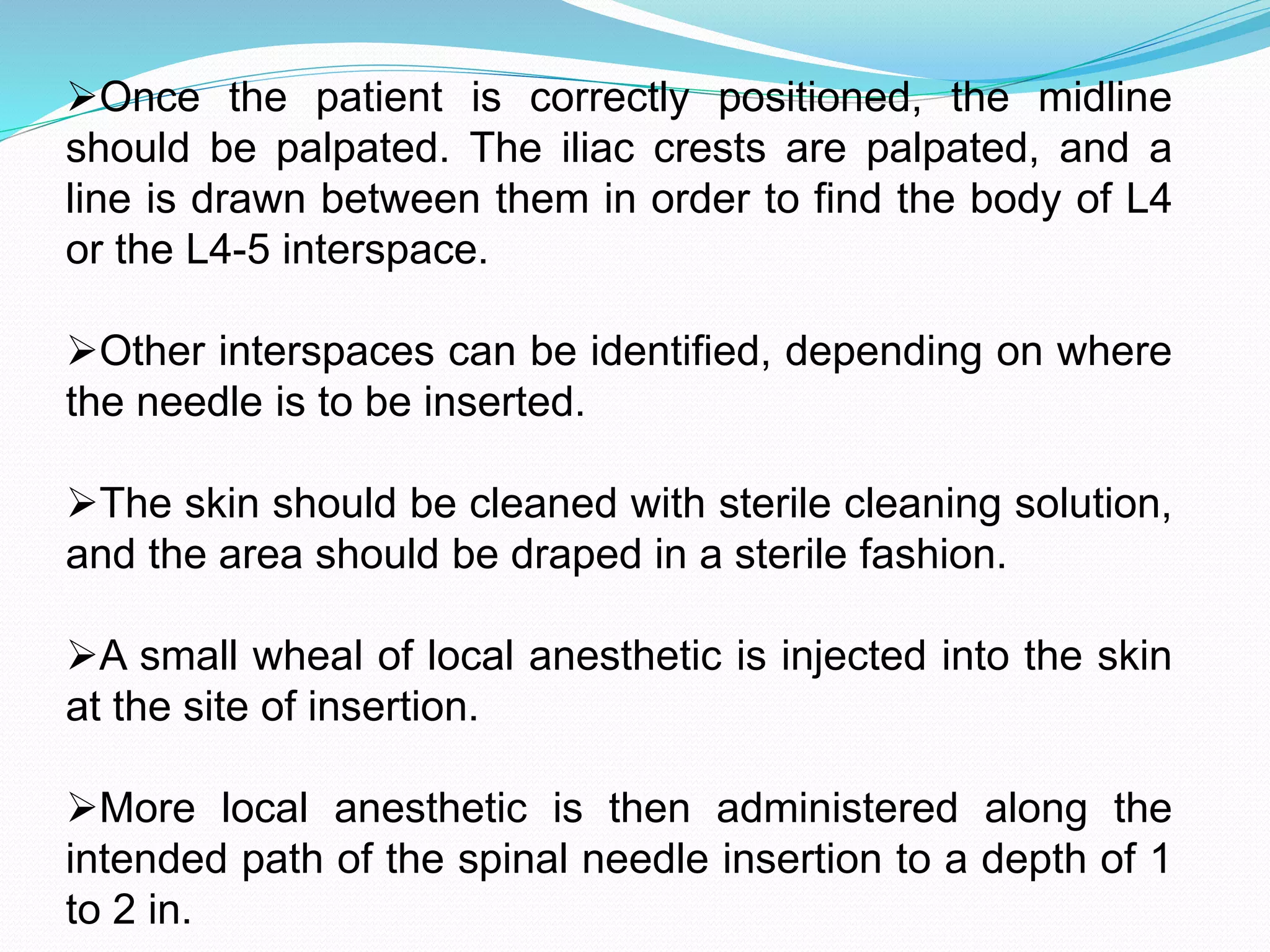







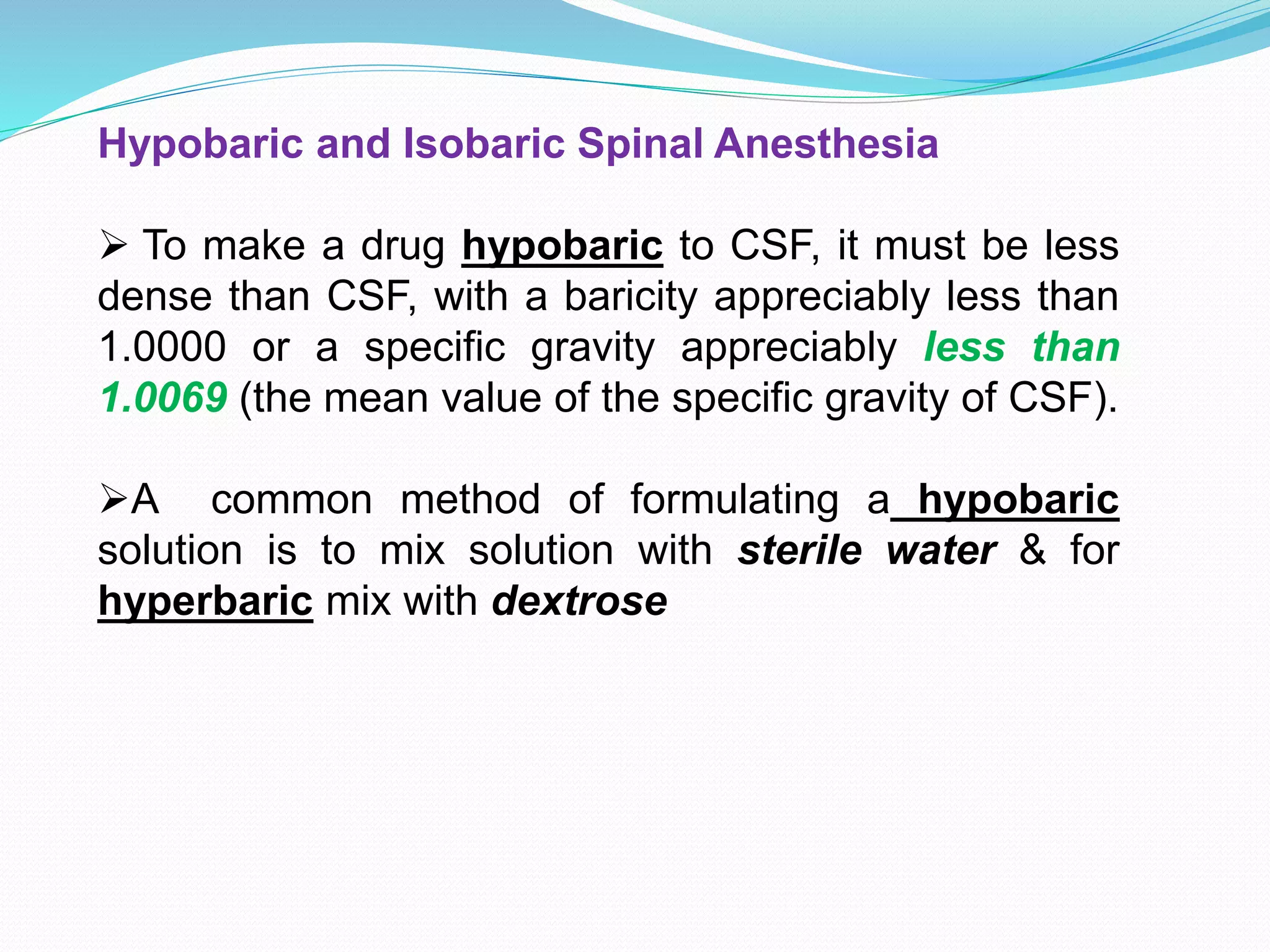

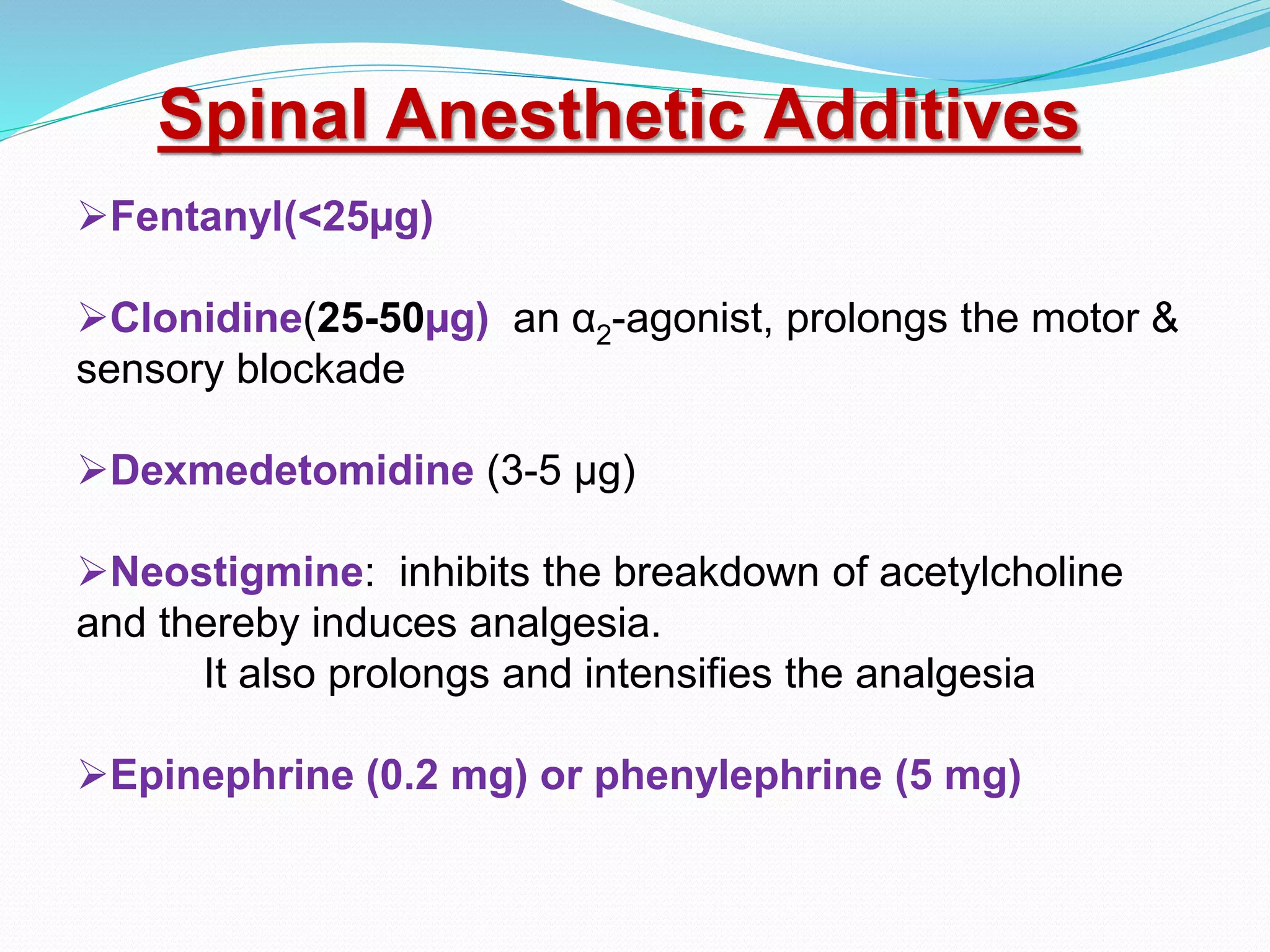
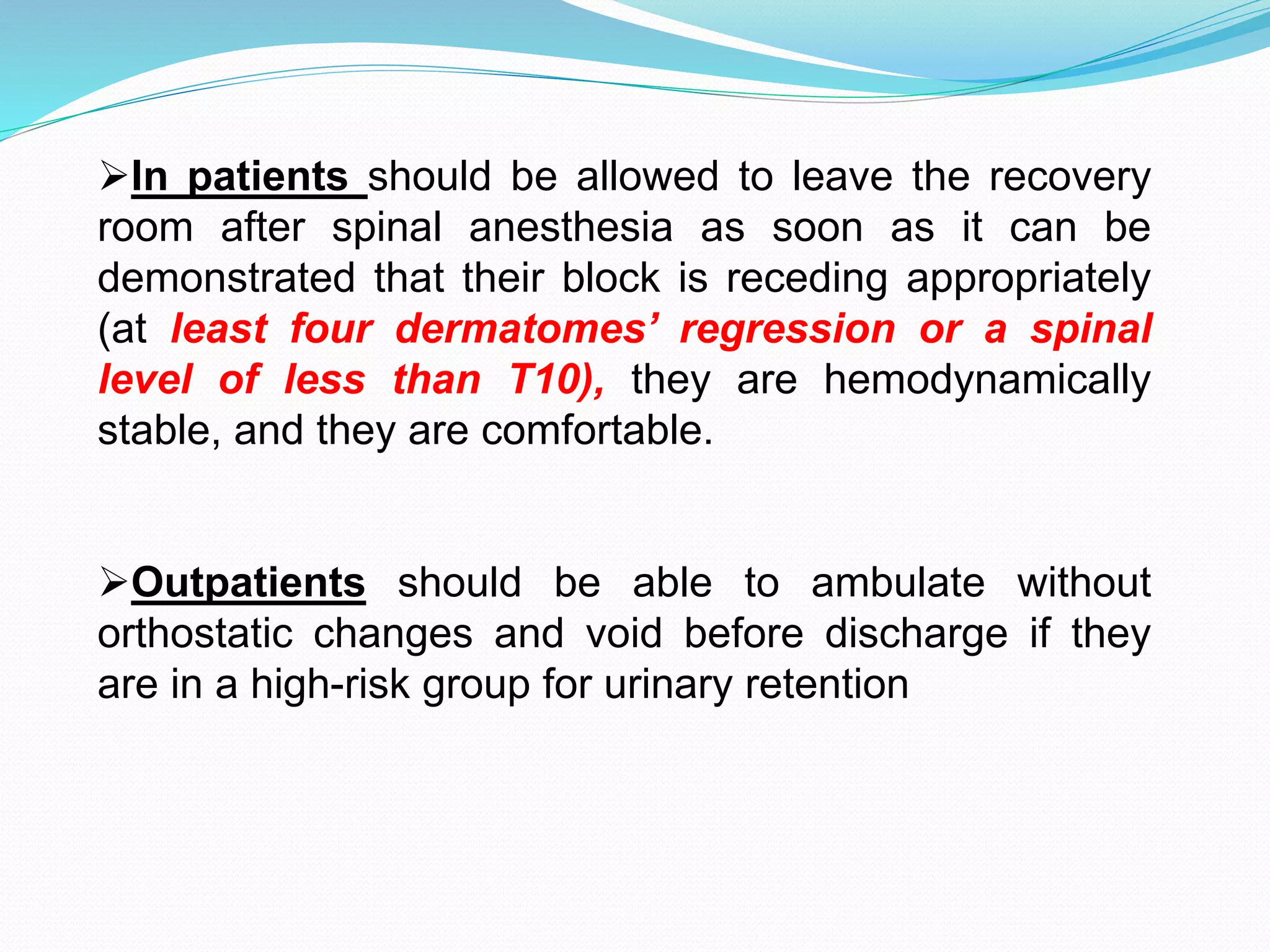

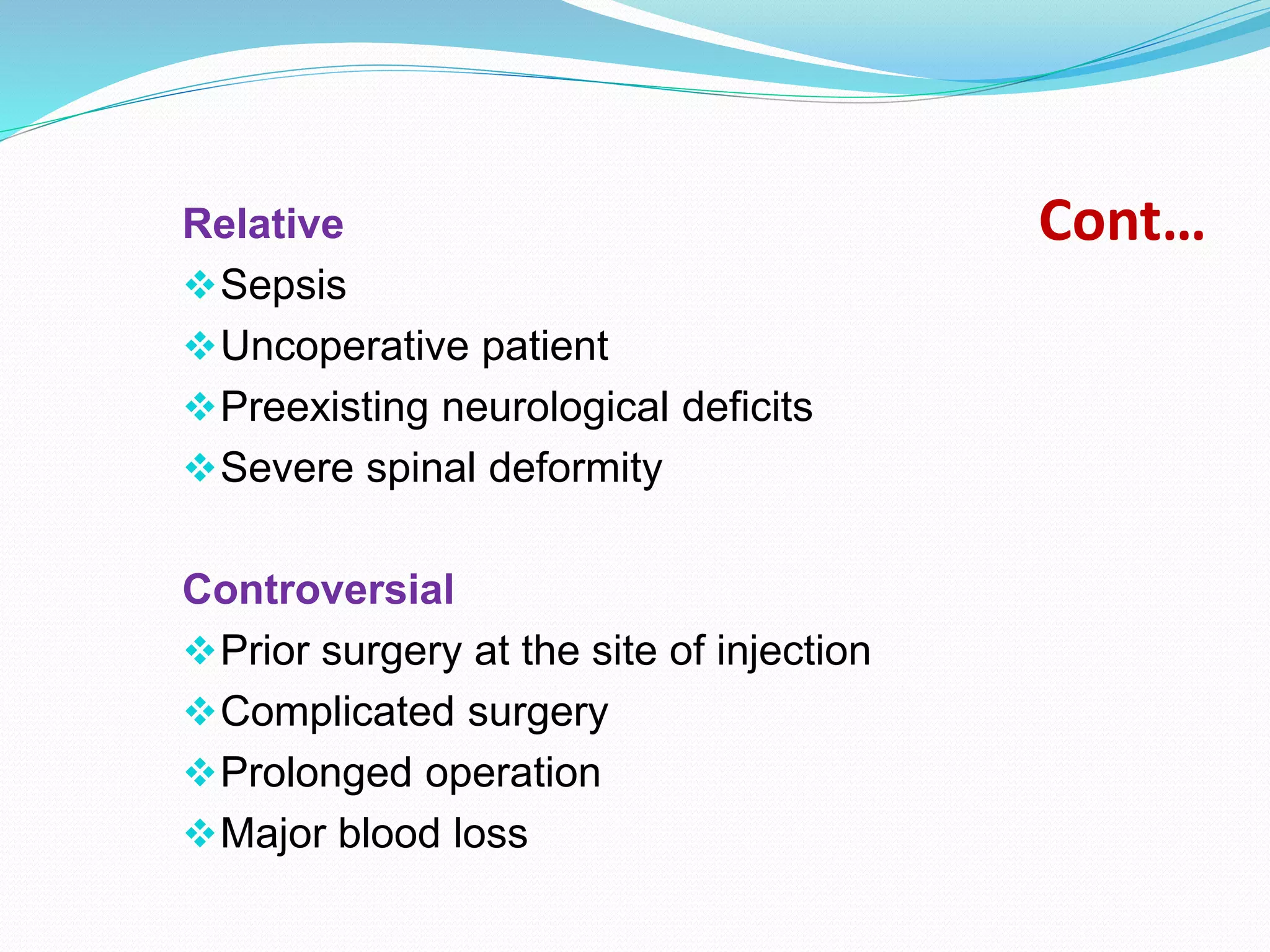

![CRANIAL NERVE PALSY
TRANSIENT NEUROLOGICAL SYMPTOM (More
common with lidocaine)
CAUDA EQUINA SYNDROME (Bowel-bladder
dysfunction)
HIGH NEURAL BLOCKADE :
Excessive dose, failure to reduce standard
dose[elderly, pregnant, obese, very short stature]
Unconsciousness, hypotension, apnea is
referred to as high spinal or total spinal](https://image.slidesharecdn.com/chapter-8-spinalanaesthesia-210725104417/75/Chapter-8-spinal-anaesthesia-39-2048.jpg)
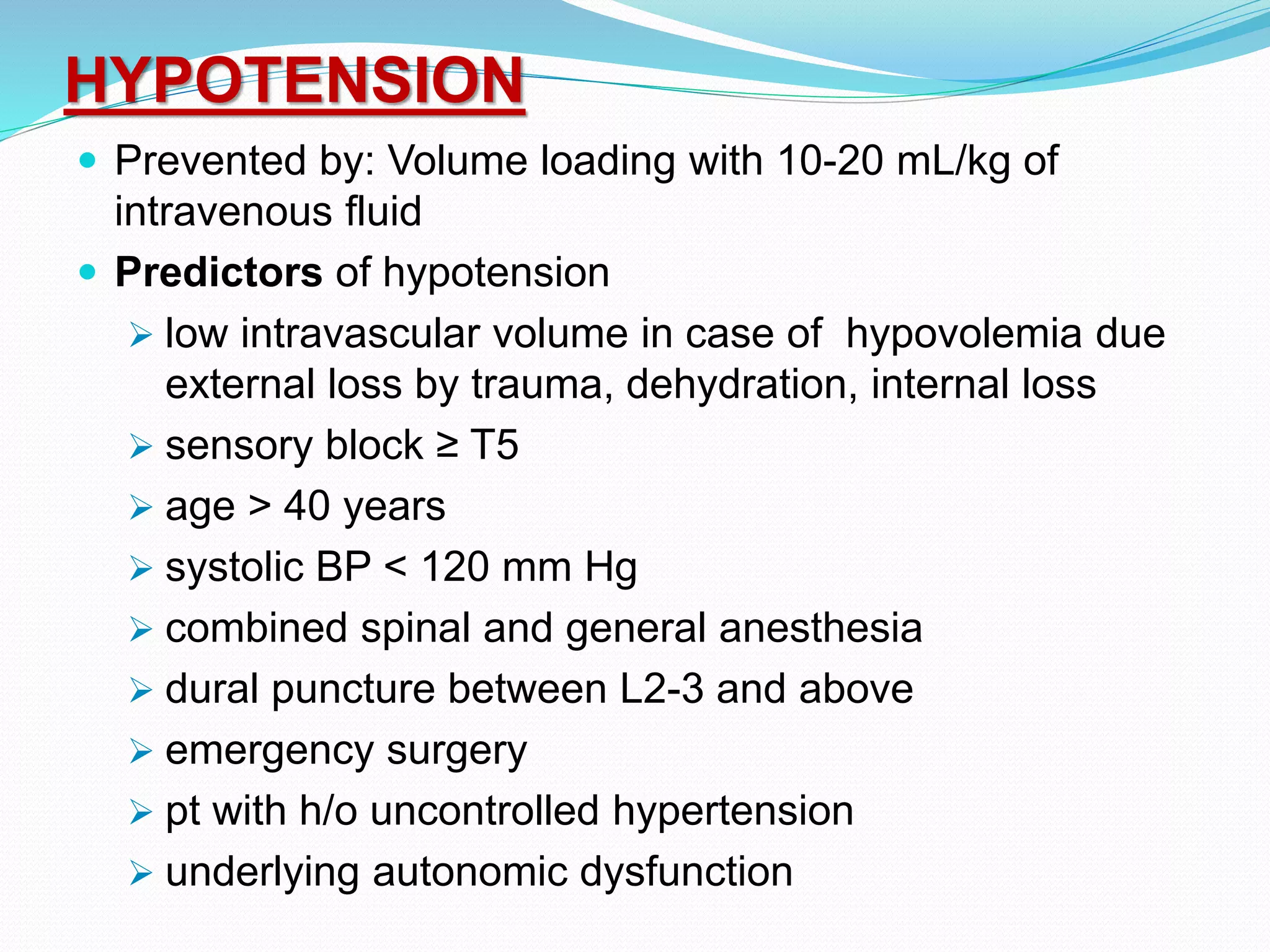
![Treatment of hypotension
100% O2
Elevation of leg .
Head down position
FLUIDS-
crystalloid
Colloid [500-1000ml] preferred due to increased
intravascular time, maintaining CO, uteroplacental
circulation.](https://image.slidesharecdn.com/chapter-8-spinalanaesthesia-210725104417/75/Chapter-8-spinal-anaesthesia-41-2048.jpg)
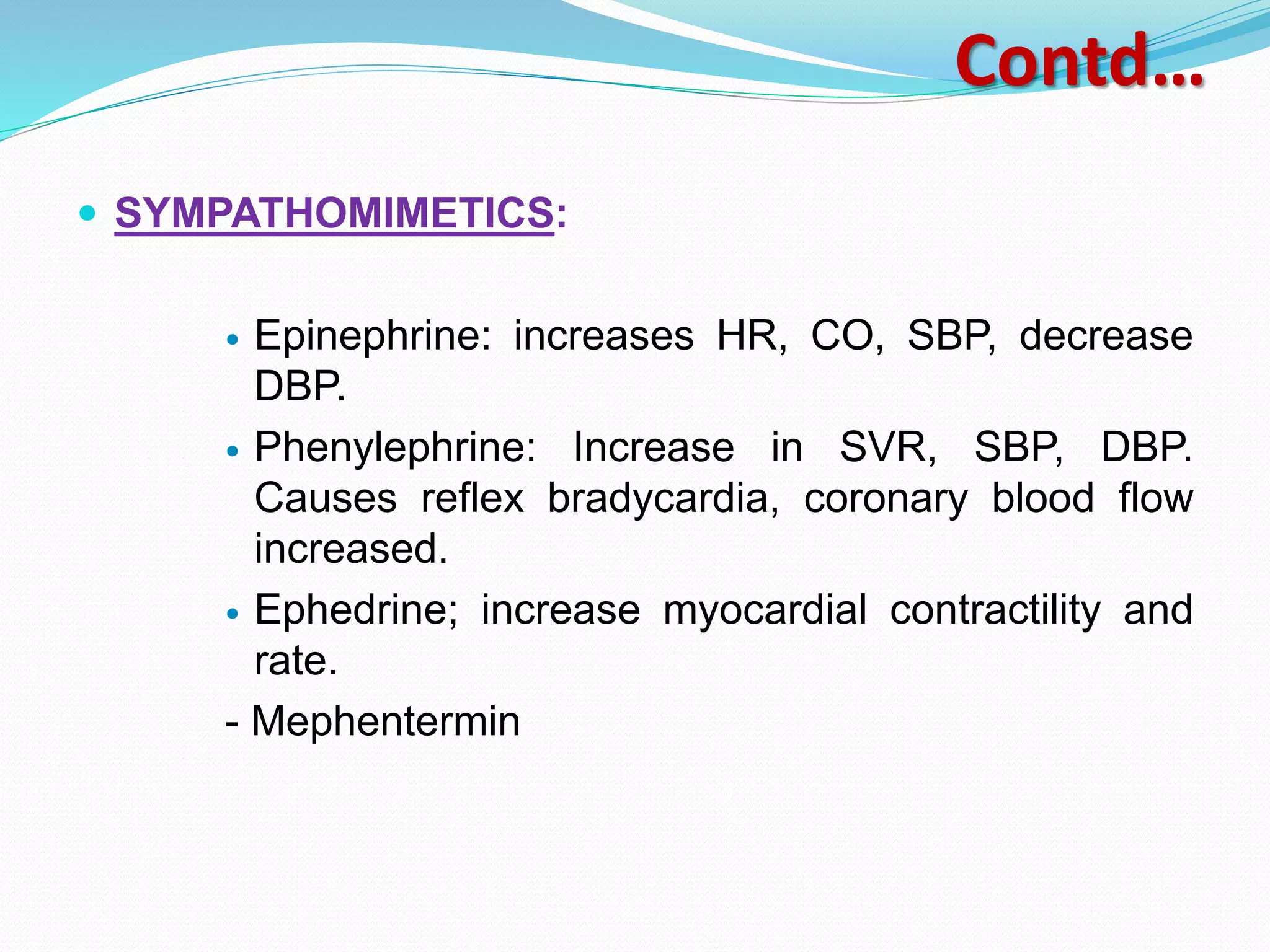

![Post Dural Puncture Headache:
Due to leak of CSF from dural defect leads to traction in
supporting structure especially in dura and tentorium &
vasodialatation of cerebral blood vessels.
Usually bifrontal and or occipital, usually worse in
upright , coughing , straining
Causes nausea, photophobia, tinnitus, diplopia[6th nerve],
cranial nerve palsy
Treatment plan include keeping patient supine,
adequate hydration, NSAIDS with without caffeine
[increases production of csf and causes vasoconstriction
of intracranial vessels], if not relieved within 12-24 hr
then epidural blood patch.
Epidural blood patch consists of giving 20 ml](https://image.slidesharecdn.com/chapter-8-spinalanaesthesia-210725104417/75/Chapter-8-spinal-anaesthesia-44-2048.jpg)

